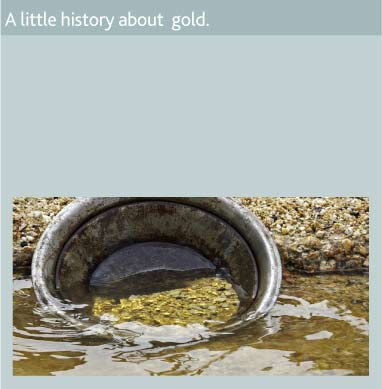
Gold Bars
Standard mint gold bars in the United States are approximately 7 x 3 5/8 inches x 1/34 inches in size. Each bar, which is slightly smaller than a traditional building brick, contains about 400 troy ounces of gold. There are two main types of gold bars—minted and cast. These types are determined by the method of manufacturing used to create the bars. Minted bars are hand-cut from a flat piece of gold using the required measurements, while cast bars are created by pouring molten gold into an ingot (a mold used to cast metal objects). Any markings that appear on a gold bar are almost always applied with a press.
A new form of gold bar is a ChipGold. This is a small ingot (1-20 grams) of gold the size of a credit card that is put in a sealed and certified package.
When gold is measured in ounces, the troy ounce is used. One troy ounce is equal to 31.1034768 grams.
Gold bars were first stored at Fort Knox Bullion Depository in Fort Knox, Kentucky in January 1937. The remainder of the United States’ monetary bullion stocks is stored at the Philadelphia and Denver Mints and the San Francisco and New York Assay offices.
Sell Gold at BrokenGold™! It's easy, just put your gold or old jewlery in the prepaid envelope and send it to us. You will receive a check 24 hours after we receive your gold or other jewelry. It is that easy! We have gained an excellent reputation on the web and have an ever-growing list of satisfied customers. If you have questions take a look at our Frequently Asked Questions page.
Back to the Information Index

Gold was first discovered thousands of years ago in its natural state, in streams, which lead to mining all over the world. Its brilliance, natural beauty, great malleability and resistance to tarnish made it enjoyable to work with. Gold gave rise to the concept of money itself. Today gold is used for jewelry fabrication, industrial application, and medical uses, by governments and central banks and by private investors.



Sell scrap gold, silver and have more cash for gold jewelry.
To get started selling gold, fill out the form below.
 |  |
We are a proud member of TRUSTe, Gemological Institute of America, International Precious Metals Institute.

